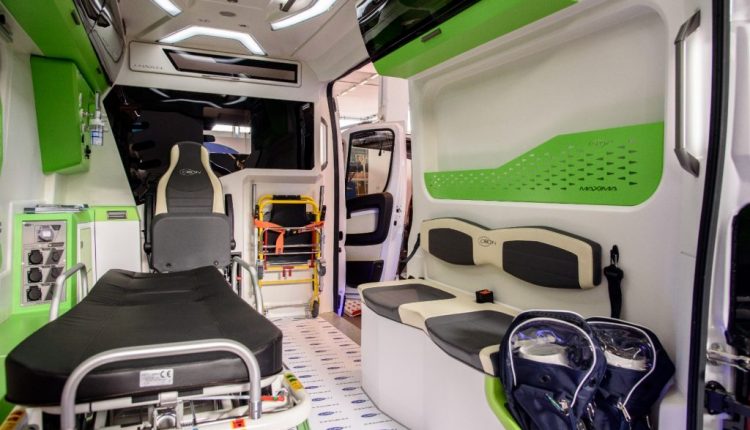
Microbial contamination on ambulance surfaces: published data and studies
Microbial contamination on ambulance: Healthcare-associated infections (HAIs) are infections that patients acquire while receiving medical treatment in a healthcare facility
During ambulatory transport, the patient may be exposed to pathogens transmitted from emergency medical service (EMS) personnel or EMS surfaces.
The aim of this study was to determine whether organisms commonly associated with HAIs have been detected on surfaces in the patient-care compartment of ambulances.
Five electronic databases on microbial contamination in ambulances: PubMed, Scopus , Web of Science , Embasee Google Scholar
They were used to search for articles using inclusion and exclusion criteria following the PRISMA checklist.
Inclusion criteria consisted of articles published in English, between 2009 and 2020, had positive samples collected from the patient-care compartment of a ground ambulance, and reported sample collection methods of either swab sampling and/or Replicate Organism Detection and Counting (RODAC) contact plates.
Studies not meeting these criteria were excluded from this review.
From a total of 1376 articles identified, 16 were included in the review.
Organisms associated with HAIs were commonly detected in the patient-care compartment of ambulances across a variety of different surfaces, including blood pressure cuffs, oxygen apparatuses, and areas of patient stretchers.
A high prevalence of pathogenic bacteria in ambulances suggests that standard protocols related to cleaning compliance may not be effective.
The primary recommendation is that designated subject matter experts in infection prevention should be incorporated as liaisons in the pre-hospital setting, acting as a link between the pre-hospital (e.g., ambulance transport) and hospital environments.
Although micro-organisms are ubiquitous in the environment, improved living conditions, advances in medicine, and access to healthcare have altered human morbidity and mortality from infectious diseases over the last two centuries.
Given the constant expansion in population, the use of healthcare facilities and emergency response transport vehicles will increase worldwide.
In the USA, over 20 million patients receive pre-hospital care from emergency medical services each year.
Despite advances in public health, patients and medical staff continue to fall ill due to pathogens causing microbial contamination in the healthcare environment
Healthcare-associated infections (HAIs) are infections that are acquired in a healthcare setting while receiving or providing medical treatment.
Although HAIs are often preventable, common sources of infections originate from indwelling (intravenous catheters) and invasive devices such as urinary Foley catheters and intubation (ventilators), as well as contaminated hands resulting from improper hand hygiene.
HAIs are frequently transmitted to patients from the hands of healthcare workers.
For example, community-acquired and hospital-acquired strains of meticillin-resistant Staphylococcus aureus (MRSA) isolated from environmental fomites were found to be genetically similar to S. aureus and nasal MRSA isolates collected from emergency medical service (EMS) providers.
This suggests that MRSA transmission between healthcare personnel and pre-hospital environmental surfaces is possible.
Although there is variability in estimating the total cost of HAIs in the USA, HAIs cause additional burden and cost to individual hospitals and healthcare systems.
The additional costs of HAIs are attributed to longer hospital length of stay, more diagnostic testing, treatments and post-discharge complications.
Schmier et al. developed a spreadsheet model derived from published literature to estimate potential annual HAI cost savings to the US healthcare system with the implementation of healthcare antiseptics (e.g., handwashing, surgical hand scrubs, and patient pre-operative and pre-injection skin preparations).
According to these data, estimates of the annual national economic burden of HAIs range from $1.42 billion to $14.1 billion for catheter-associated urinary tract infections, central line-associated bloodstream infections, gastrointestinal infections, surgical site infections, ventilator associated pneumonia and hospital-acquired (not ventilator associated) pneumonia.
The use of antiseptics could reduce HAI costs by an estimated $142 million to $4.3 billion annually.
In addition to the financial burden of IOS, morbidity and mortality rates associated with IOS (microbial contamination) are high
In developed countries such as the USA, at least 99,000 deaths per year occur from HAIs and approximately 7% of hospitalized patients in developed countries and 19% in developing countries are affected by HAIs.
Common micro-organisms responsible for HAIs, transmissible by contaminated hands, include Staphylococcus aureus, MRSA, and carbapenem-resistant Enterobacterales (CRE) such as Klebsiella pneumoniae.
Antimicrobial resistance is a global concern; it threatens effective treatment and prevention of various infections.
It occurs when micro-organisms are continuously subjected to antimicrobial agents and evolve to develop resistance to such agents.
Once the antibiotics are no longer effective, the infections are able to persist in the host.
Although resistance can occur naturally over a long period of time, overuse of antimicrobial agents increases the rate at which micro-organisms resist antibiotic therapy.
HAIs caused by antibiotic-resistant micro-organisms require more healthcare-related resources and patients are at an increased risk of worse clinical outcomes and death.
Specifically, those with MRSA are 64% more likely to die when compared to individuals with a susceptible strain.
Therefore, the prevention of HAIs is important for reducing morbidity and mortality at the global, community, and individual level.
The purpose of this systematic literature review was to determine whether organisms commonly associated with healthcare-associated infections have been detected on surfaces in the patient-care compartment of ambulances.
An EMS environment may include ground ambulances, air ambulances, EMS facilities, or EMS personnel.
Of these environments, the ground ambulance has been most researched for characterizing micro-organisms, and was the subject of this study.
Microbial contamination on ambulance surfaces: Read the full article
Infezione microbica in ambulanza 1-s2.0-S0195670122000020-mainRead Also:
Emergency Live Even More…Live: Download The New Free App Of Your Newspaper For IOS And Android
How To Decontaminate And Clean The Ambulance Properly?
FDA Warns On Methanol Contamination Using Hand Sanitizers And Expands The List Of Poisonous Products



